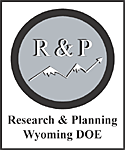Wyoming Unemployment Rate Falls to 6.4% in December 2010
The Research & Planning section of the Wyoming Department of Employment has reported that the state's seasonally adjusted1 unemployment rate decreased from 6.6% in November to 6.4% in December. It remained much lower than its December 2009 level of 7.5% and the current U.S. rate of 9.4%. Nonfarm employment continued to increase, growing by 1.4% from December 2009 to December 2010.Over the year, Wyoming nonfarm employment increased by 3,900 jobs (1.4%). Natural resources & mining (including oil & gas) posted the largest job gains (3,200 jobs, or 13.1%). Growth was also seen in educational & health services (800 jobs, or 3.1%), government (including public schools, colleges, & hospitals; 700 jobs, or 1.0%), wholesale trade (500 jobs, or 5.8%), construction (200 jobs, or 0.9%), manufacturing (200 jobs, or 2.2%), and other services (200 jobs, or 1.8%). Job losses occurred in retail trade (-1,400 jobs, or -4.5%), leisure & hospitality (-600 jobs, or -2.0%), and financial activities (-100 jobs, or -0.9%). Employment was unchanged from a year earlier in professional & business services and information.
From November to December, Wyoming added 600 jobs (0.2%). This level of increase is consistent with normal seasonal patterns. Seasonal job losses in construction (-1,900 jobs, or -8.2%) were more than offset by seasonal job gains in leisure & hospitality (1,600 jobs, or 5.8%), retail trade (400 jobs, or 1.4%), natural resources & mining (200 jobs, or 0.7%), and transportation & utilities (200 jobs, or 1.4%).
Most county unemployment rates were stable or increased slightly from November to December. The lowest unemployment rates were found in Sublette (3.7%), Albany (4.2%), Campbell (4.8%), and Converse (4.8%) counties. From December 2009 to December 2010 unemployment decreased in all 23 counties.
1Seasonal adjustment is a statistical procedure to remove the impact of normal regularly recurring events (such as weather, major holidays, and the opening and closing of schools) from economic time series in order to obtain a better understanding of changes in economic conditions from month to month.
